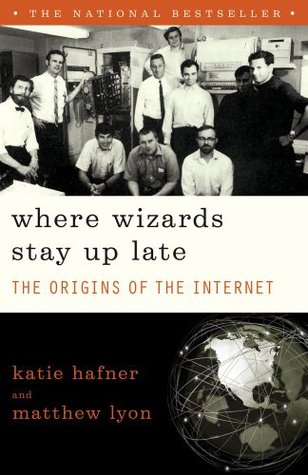More on this book
Community
Kindle Notes & Highlights
by
Katie Hafner
Read between
April 11 - April 16, 2018
in November 1983 came forward with two RFCs describing the domain name system. “DNS was a very significant change in the way we thought about the system being organized,” said Postel. “Tree-branching” was the guiding metaphor. Each address would have a hierarchical structure. From the trunk to the branches, and outward to the leaves, every address would include levels of information representing, in progression, a smaller, more specific part of the network address.
DARPA began pressuring people to adopt DNS addresses in 1985. In January 1986 a grand summit meeting took place on the West Coast, bringing together representatives of all the major networks. By the time the summit was over, everyone had agreed that yes, they really believed in the DNS concept.
For years Cerf had seen the Internet as a successful, satisfying experiment. Occasionally he had hoped the Internet might reach a wider world of users. Now here was evidence that it was doing just that.
“Standards should be discovered, not decreed,” said one computer scientist in the TCP/IP faction. Seldom has it worked any other way.
By the late 1980s the Internet was no longer a star with the ARPANET its center; it was a mesh, much like the ARPANET itself. The NSFNET program had democratized networks as even CSNET hadn’t. Now anyone on a college campus with an Internet connection could become an Internet user. The NSFNET was fast becoming the Internet’s spine, running on lines that were more than twenty-five times faster than ARPANET lines. Users now had a choice between connecting to the ARPANET or to the NSFNET backbone. Many chose the latter, not only for its speed but because it was so much easier to connect to.
The ARPANET was now just one of hundreds of ARPA Internet networks, and a dinosaur, unable to evolve as quickly as the rest of the Internet.
The ARPANET itself, which cost ARPA $14 million a year to run, looked arthritic next to the higher-speed NSFNET. DARPA management decided the ARPANET had outlived its usefulness. It was time to shut it down.
“The one that seemed to hurt him worse was when I turned off the old SATNET.” SATNET was slow and expensive and antiquated.
One by one, Pullen turned off the IMPs and TIPs that still lay at the heart of the original network.
By the end of 1989, the ARPANET was gone. The NSFNET and the regional networks it had spawned became the principal backbone.
The takeoff was just beginning. In 1990, the World Wide Web, a multimedia branch of the Internet, had been created by researchers at CERN, the European Laboratory for Particle Physics near Geneva. Using Tim Berners-Lee’s HTTP protocol, computer scientists around the world began making the Internet easier to navigate with point-and-click programs.
Frank Heart’s pragmatic attitude toward technical invention—build it, throw it out on the Net, and fix it if it breaks—permeated Net sensibility for years afterward. Openness in the protocol process started with Steve Crocker’s first RFC for the Network Working Group, and continued into the Internet.
The company had missed its greatest opportunity when it failed to enter the market for routers—of
“I’ll be there to see old friends, to renew some old animosities, and to join in the jockeying for credit—of which there is plenty to go around,” Metcalfe wrote. “I’ll begin by making sure partygoers realize that most TCP/IP traffic is carried by Ethernet, which I invented . . . As the party peaks, I’ll see how much credit I can grab from Vint Cerf and Bob Kahn for the invention of internetworking . . . Failing that, I’ll see if I can smile my way into the group photo of the inventors of packet-switching.”
it was the invention of TCP/IP that marked the true beginnings of internetworking. Not true, said Taylor. The Internet’s roots most certainly lay with the ARPANET. The group around the telephone grew uncomfortable.
was as noteworthy for who wasn’t present as for who was. Tim Berners-Lee, the inventor of the World Wide Web, had just moved to Boston from Geneva to join MIT’s Laboratory for Computer Science. He wasn’t invited, nor was Marc Andreessen, the co-programmer of Mosaic,
The description of Ray Tomlinson’s original e-mail hack and his choice of the @ sign as a separator—and as a problem for UNIX users—was based on interviews with Tomlinson and JohnVittal.


